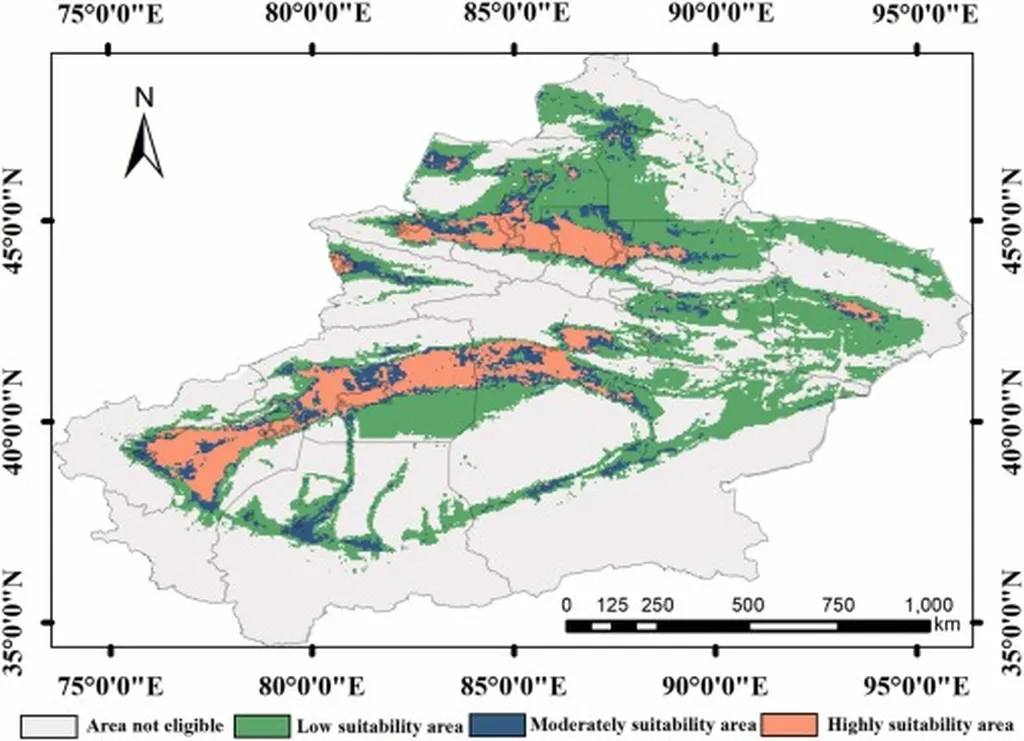In the vast, arid landscapes of Yuli County, Xinjiang, a critical cash crop, *Apocynum venetum* L., commonly known as common apocynum, is facing environmental threats that could jeopardize its survival. To combat this, researchers have turned to deep learning to accurately map and monitor the plant’s spatial distribution, ensuring its sustainable development. Leading this charge is Yixuan Wang from the College of Geographical Sciences at Beijing Normal University, who, along with his team, has developed an enhanced SegFormer model to extract this vital information with unprecedented precision.
The study, published in the journal *Remote Sensing*, focuses on improving the extraction accuracy and efficiency of *Apocynum venetum* L.’s spatial distribution. The enhanced SegFormer model, integrated with the T2T-ViT backbone network, extracts features at five scales, significantly boosting the model’s performance. “The improved SegFormer model outperforms other models in terms of mIoU, OA, and mPA metrics, achieving values of 88.22%, 93.98%, and 89.66%, respectively,” Wang explains. This enhanced accuracy is crucial for the sustainable development of *Apocynum venetum* L., a plant known for its medicinal properties and use in traditional Chinese medicine.
The implications of this research extend beyond the agricultural sector. Accurate spatial distribution data can inform resource protection efforts, guide restoration planting, and aid in germplasm breeding. For the energy sector, this technology could be a game-changer. As the world shifts towards renewable energy, the demand for biomass energy crops is on the rise. *Apocynum venetum* L., with its adaptability to harsh environments, could be a valuable addition to the biomass energy crop portfolio. Precise spatial distribution data can help optimize planting strategies, maximize yield, and ensure sustainable harvesting, making the crop a more viable option for bioenergy production.
The enhanced SegFormer model’s stability and robustness offer a promising tool for monitoring and managing other cash crops and biomass energy crops. As Wang notes, “The T2T_vit_14 model performs best among all the T2T-ViT configurations, with superior extraction effects on fragmented small plots compared with the other models.” This capability is particularly valuable in diverse and fragmented landscapes, where traditional monitoring methods often fall short.
This research not only advances the field of deep learning in agriculture but also paves the way for more sustainable and efficient agricultural practices. As the world grapples with climate change and resource depletion, technologies like the enhanced SegFormer model offer a beacon of hope. They provide the data and insights needed to make informed decisions, protect valuable resources, and ensure the sustainable development of vital crops. In the words of Wang, “This work improves the extraction accuracy and efficiency of the spatial distribution of *Apocynum venetum* L. via an improved SegFormer model, which has strong stability and robustness and offers scientific evidence for resource protection, restoration planting, and germplasm breeding in Yuli County, Xinjiang.”
As we look to the future, the integration of deep learning and remote sensing technologies holds immense potential. It could revolutionize the way we monitor and manage our agricultural landscapes, ensuring food security, promoting biodiversity, and supporting the transition to renewable energy. The work of Yixuan Wang and his team is a testament to the power of these technologies and a stepping stone towards a more sustainable future.

